13 Bulgarian Food You Must Try Before You Die
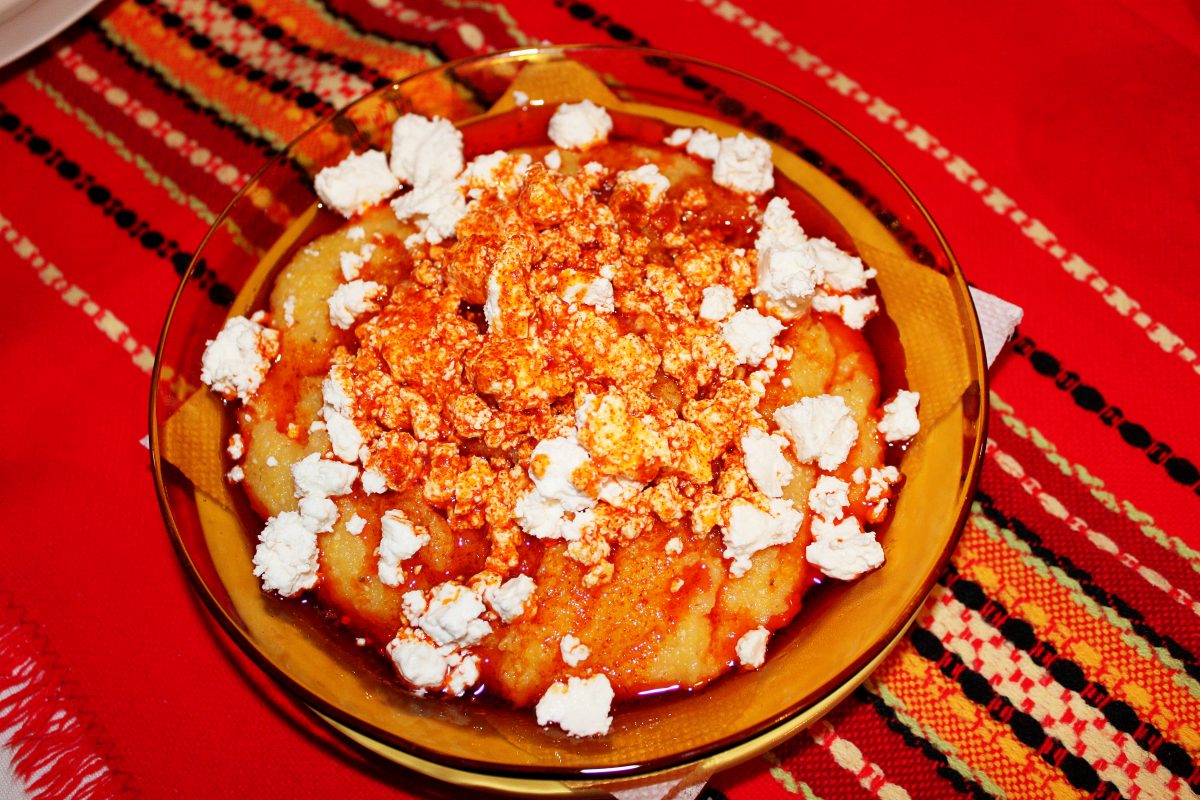
Welcome to the culinary paradise of Bulgaria!
Meals in Bulgarian restaurants feature fresh, basic ingredients. Thanks to Bulgaria’s sunny climate and fertile soil, fruit, and vegetables grow in abundance – sweet mulberries, big juicy tomatoes, tasty bell peppers in many varieties – and they find their way into traditional dishes.
Meat (beef, pork, mutton, goat, chicken, and turkey) and eggs are mostly (though not always) free-range, and restaurants tend to buy vegetables directly from the farmers.
When dining in a restaurant, be prepared to wait – the chefs may only start to chop the vegetables when they receive your order, and the crisp flatbread will be baked specifically for you. This overall freshness is what makes the Bulgarian cuisine special.
If you’re in a hurry, try the Bulgarian versions of fast food – printsessa, banitsa, kebapche. These are less processed and therefore probably a lot healthier than what you’re used to in the West.
Vegetarians and followers of the Mediterranean Diet will love Bulgarian food, as will fans of Italian, Greek and Turkish cuisine. Only the fish and seafood dishes can sometimes be a disappointment.
Eating out is surprisingly inexpensive in Bulgaria, with restaurant meals costing not much more than self-catering.
Here are the best traditional Bulgarian foods for you to try, together with gourmet advice on how to enjoy them best.
1.
Shopska Salata – Bulgaria’s National Dish
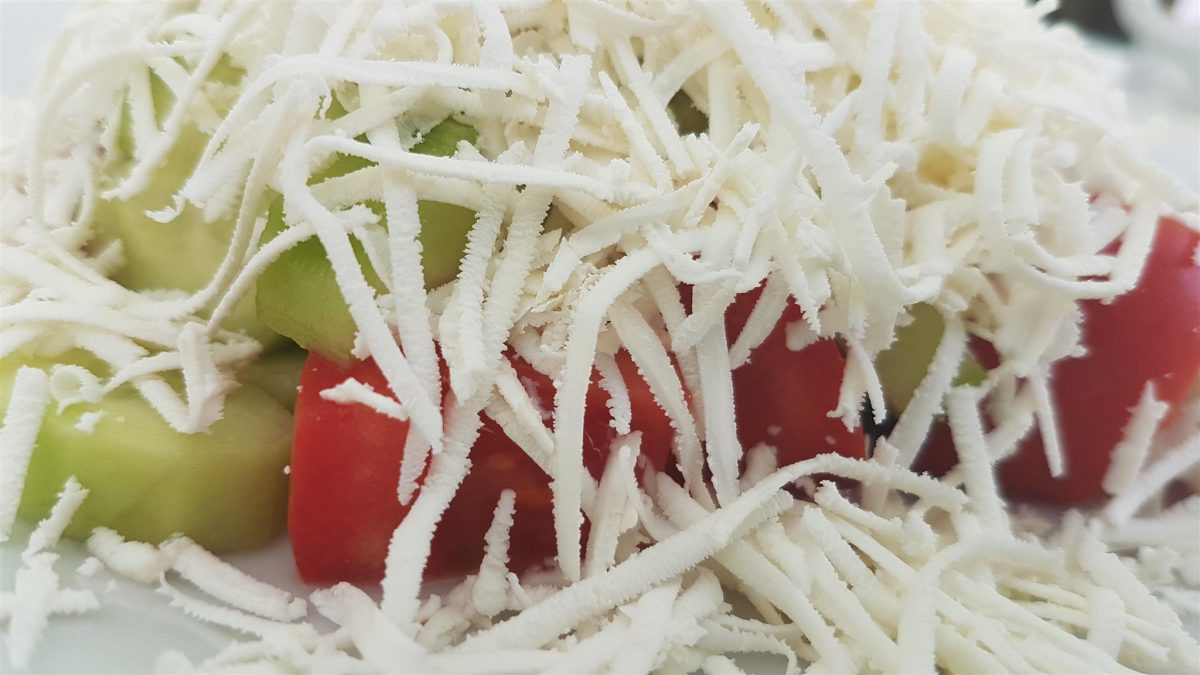
Photo by Rayne Hall (copyright)
Perfect as a starter or a light lunch, shopska is a tossed salad with chopped tomatoes, cucumbers, red onions and grated white sirene cheese, topped with a single black olive.
The wide availability of the ingredients during the summer months (using locally grown vegetables), as well as the dominant colours (white – green – red = the Bulgarian flag) have elevated shopska to the status of national dish. If you want to gain the approval of your Bulgarian friends, mention that you like eating shopska, and watch them beam with delight.
From a tourist’s perspective, the great thing about shopska is that practically every restaurant and bistro in Bulgaria serves it. If you can’t decipher the Bulgarian menu with dishes written in Cyrillic letters, simply ask for ‘shopska salata’ and you know what you’ll get.
Wait-staff will place a stand with four condiments on the table – red wine vinegar, sunflower oil, black pepper and salt – so you can dress the salad to your taste.
Gourmet Tip:
Pitka – flatbread freshly baked on the restaurant premises – is a harmonious accompaniment. For a drink, order one of Bulgaria’s famous mineral waters (perhaps Bankia, Gorna Banya or Hisarya). Shopska salata also goes really well with Bulgaria’s national drink, rakia, a clear fruit brandy.
2.
Kiselo Mlyako – Bulgaria’s Famous Yoghurt
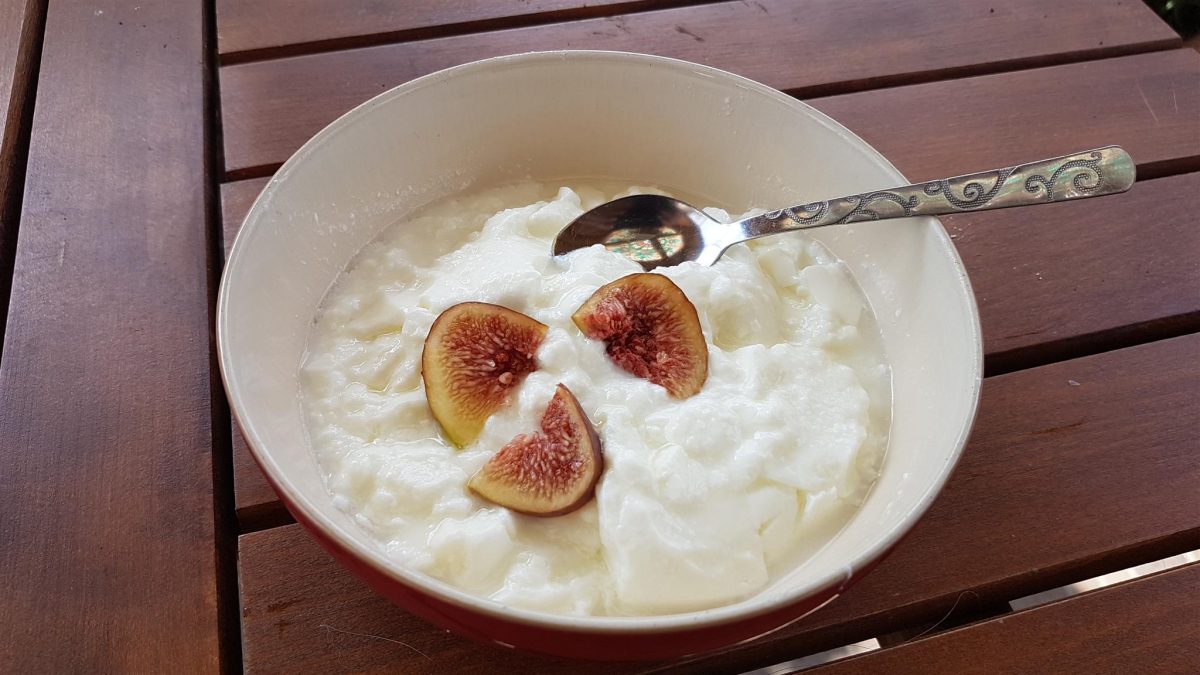
Photo by Rayne Hall (copyright)
Bulgarians are immensely proud of their yoghurt. They talk of kiselo mlyako with the same pride in their voices as when they mention their national hero, Vasil Levski, and the invention of the Cyrillic alphabet. Their pride is justified, because Bulgarian yoghurt may indeed be the best in the world.
This is due not to a manufacturing process, but a bacterium – lactobacillus bulgaricus – that flourishes only in milk from cows that have grazed on Bulgarian meadows. The effect can’t be reproduced elsewhere.
When visiting Bulgaria, take the opportunity and sample kiselo mlyako with its unique, very fresh taste. Yoghurt is sold in 500ml containers. Eat it on its own, or stir in honey, sugar, sweetener or jam. Top with fresh the fresh fruit that grow in abundance in Bulgaria, whatever is in season: mulberries, cherries, peaches, apricots, plums, and figs.
Gourmet Tip:
Stir in a couple of spoons of the delicately-flavoured rose petal jam, made from Bulgaria’ famous fragrant damascene roses.
3.
Tarator – Cold Yoghurt Soup
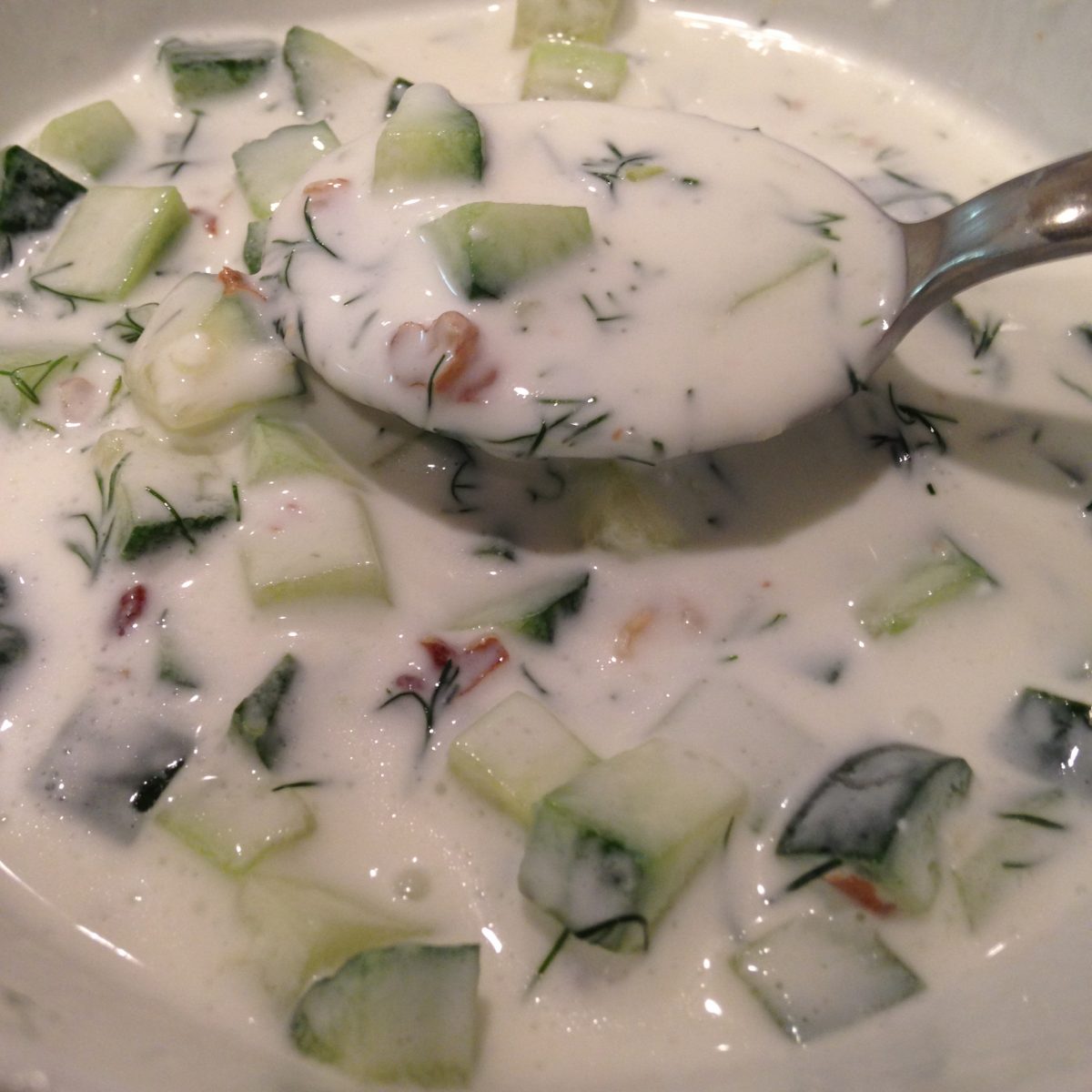
Photo by Gillgaramond on Wikimedia Commons
This traditional dish has cucumbers, yoghurt, water, garlic, and dill, and served chilled. It has a mild, slightly sour, very fresh taste. Tarator is very refreshing on a hot summer day.
Gourmet Tip:
Choose the tarator as a starter before a meat dish.
4.
Shkembe – Tripe Soup
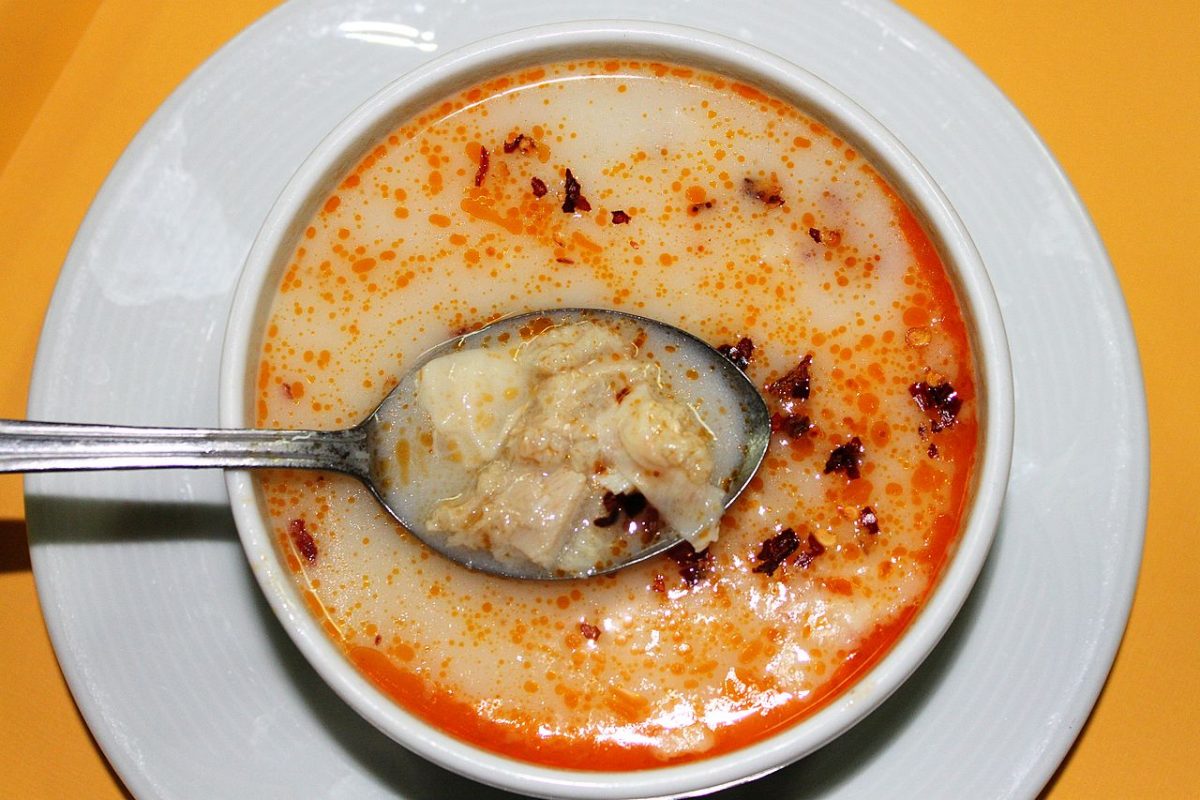
Photo by Bin im Garten on Wikimedia Commons
This hearty traditional Bulgarian dish is made from beef tripe, the stomach lining of cattle, cooked slowly with paprika, oil and milk.
Bulgarians swear by this soup as a cure for hangover.
Gourmet Tip:
The best accompaniment to tripe soup is Bulgarian beer, perhaps a Zagorka or Kamenitsa.
5.
Sutch Sos Selenchootsi – Pan-grilled Mixed Vegetables
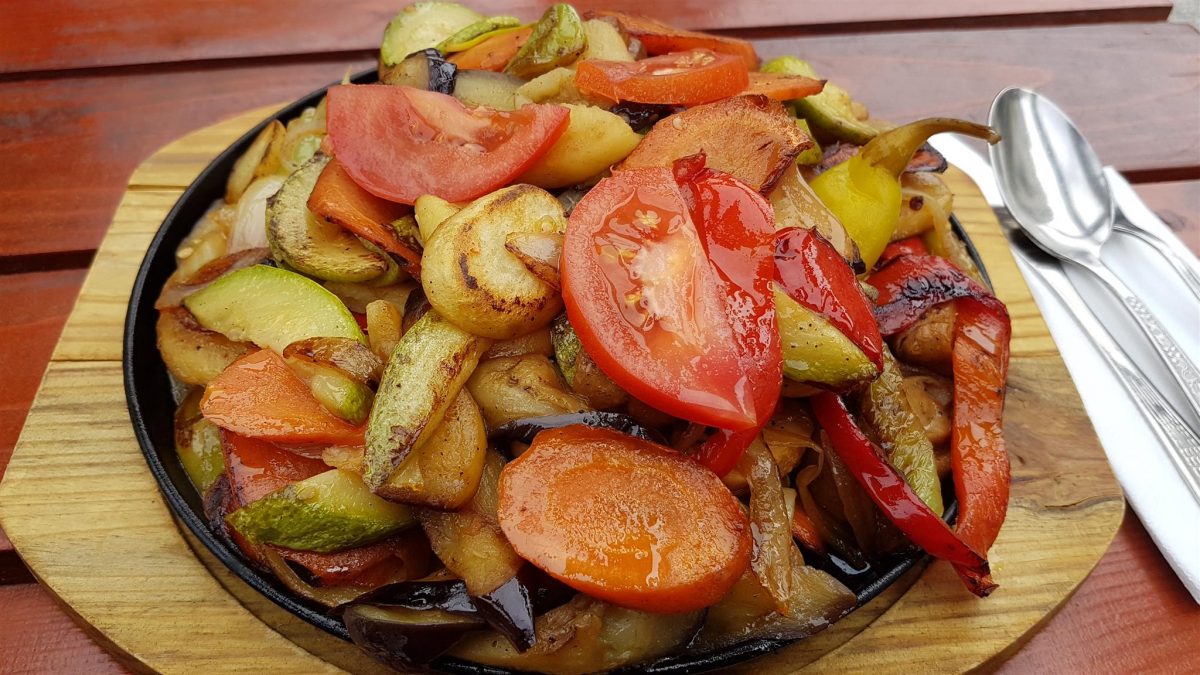
Photo by Rayne Hall (copyright)
This is a dish you could not replicate at home, because the vegetables are grilled in a special pan.
The recipe varies depending on the chef’s preference and the season, but includes at least five different vegetables – for example, peppers, tomatoes, potatoes, mushrooms, sweetcorn, green beans, peas and onions – grilled in sunflower oil. Sutch Sos Selenchootsi is a vegetarian’s dream. It uses fresh vegetables often sourced directly from the farms and from weekly markets.
They will serve the vegetables in the pan in which they are grilled. Careful – this pan will be hot! Ladle the vegetables onto the plate. The portions tend to be huge – often enough to feed two. When ordering, check the portion size: Bulgarian menus show the weight for each dish.
Sutch sos selenchootsi is a vegetables-only dish. Many restaurants also offer meat versions of sutch, with pieces of either chicken, beef or pork grilled among the vegetables.
Gourmet Tip:
One portion of sutch should be enough to fill you up – but if you have room in your stomach for more food, order a freshly cooked flatbread called ‘pitka’. Both beer and wine go well with a sutch. We recommend a Starosel Merlot.
6.
Moussaka – Without The Eggplant
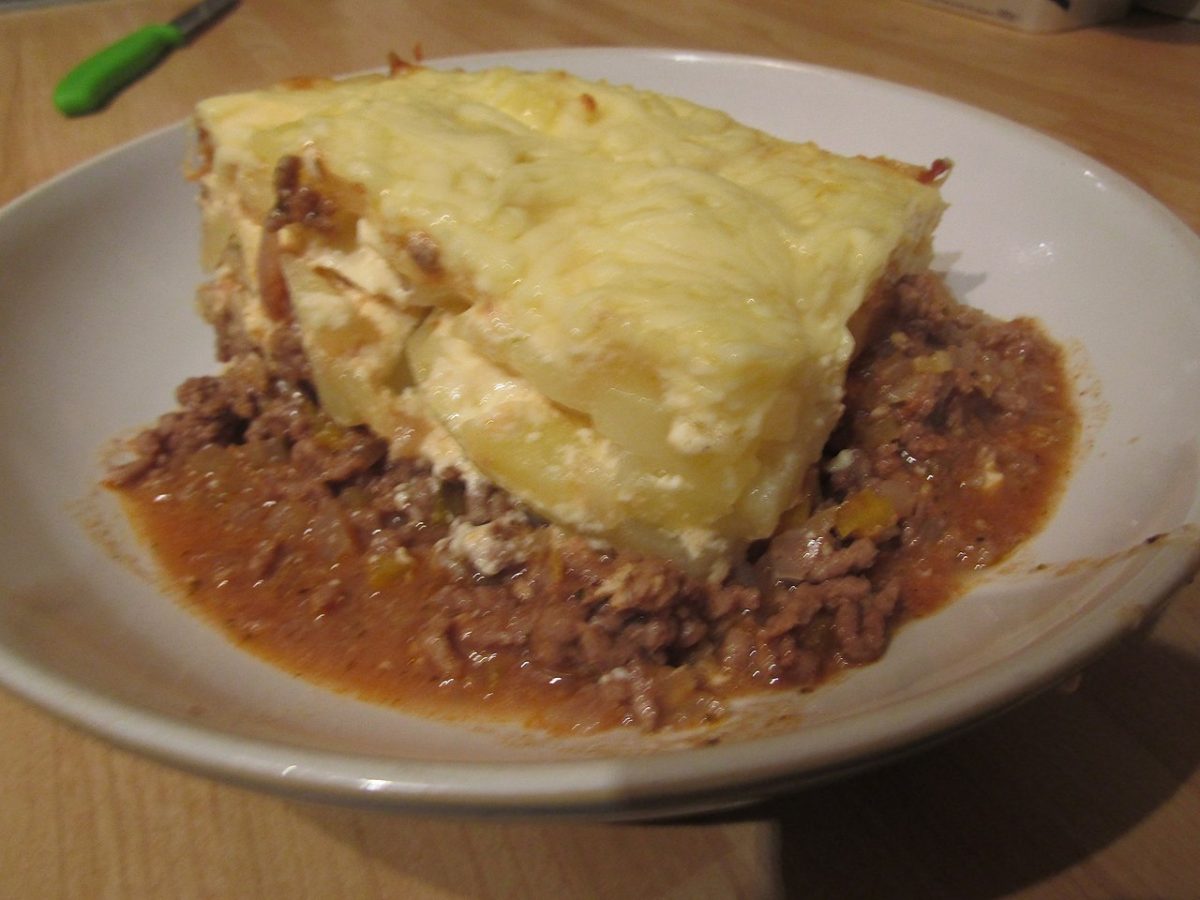
Photo by Kolforn on Wikimedia Commons
An oven-baked dish made from layers of potatoes and with minced meat (mostly pork or beef), onions and eggs, moussaka is a filling, satisfying meal. Unlike its Greek and Turkish counterparts, Bulgarian moussaka is almost always made without aubergine (eggplant). Sometimes, cooks add sliced courgettes (zucchini) to the layers.
Gourmet Tip:
Enjoy moussaka with a Bulgarian wine. The best match is Mavrud, a full-bodied wine of very dark, almost black colour from Southern Bulgaria.
7.
Kebapche – Grilled Mince Meat Sticks
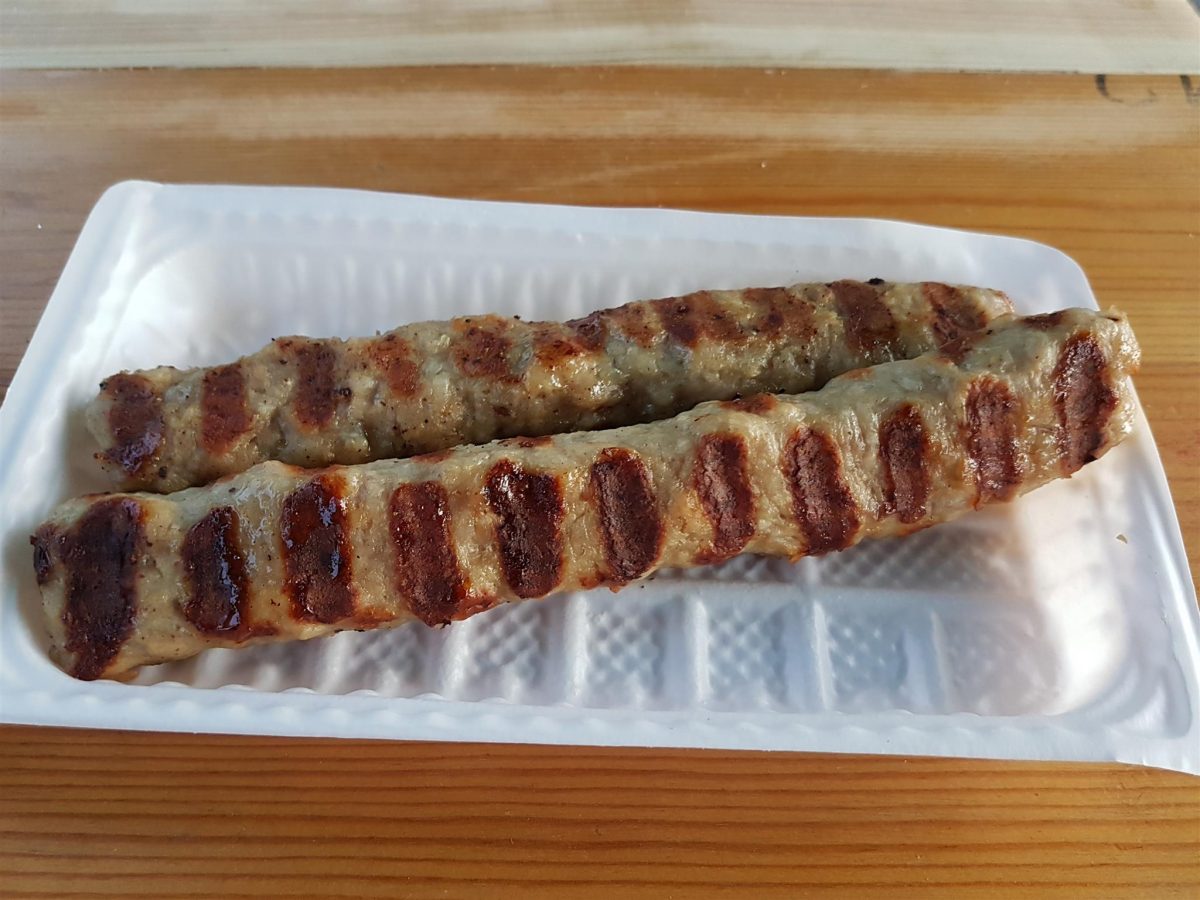
Photo by Rayne Hall (copyright)
Kebapche is a traditional dish of minced meat with herbs and spices, shaped into a sausage. Although any type of meat may be used, pork is most common. Well-grilled kebapche have a pleasant texture.
In restaurants and at village festival vending stalls, they will ask youahow many you want – the price is per kebapche. Order five or more for a main dish, or a couple if you want them as a side.
Gourmet Tip:
On their own, kebapche is unexciting, but they taste great on a bed of crunchy lettuce with a dollop of lyutenitsa.
8.
Gyuvetch – Traditional Beef Stew
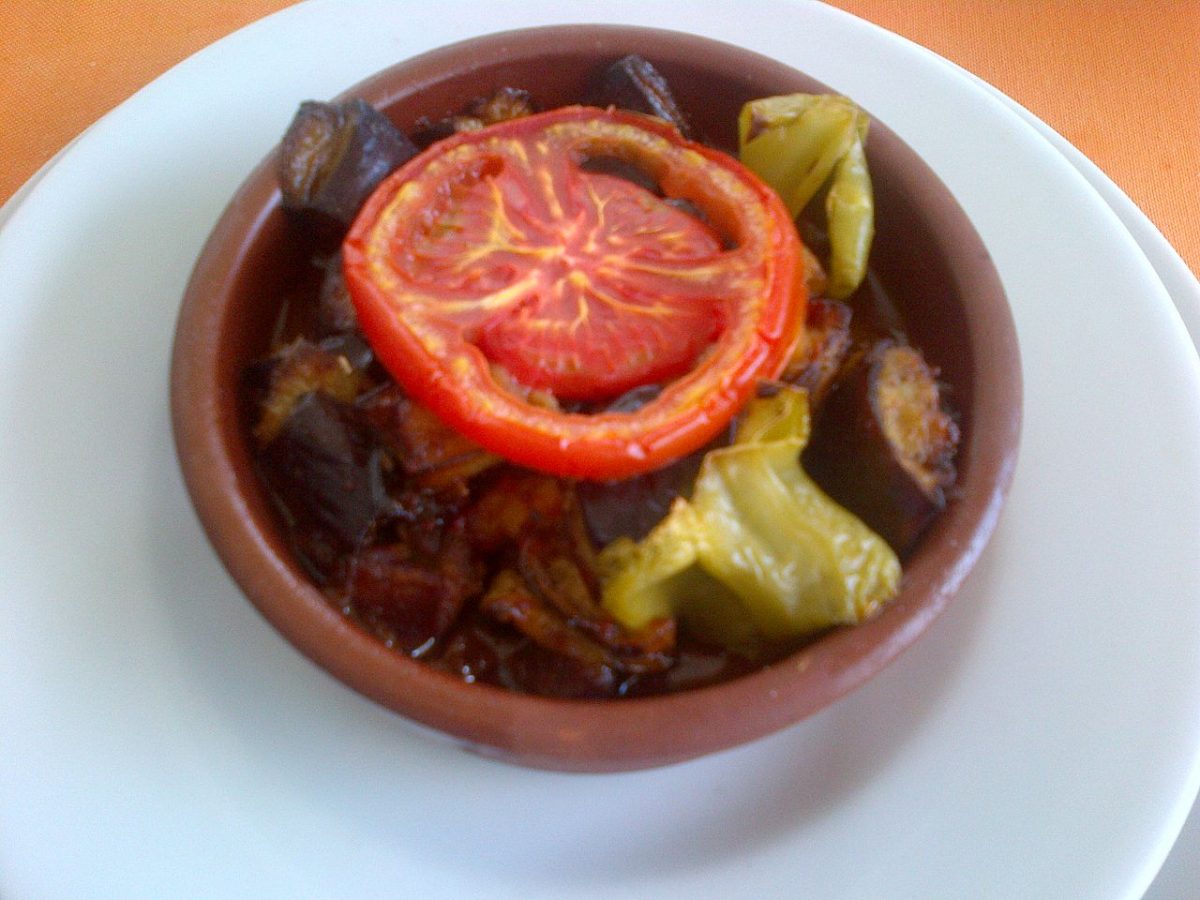
Photo by E4024 on Wikimedia Commons
Gyuvetch (or Gyuvech, Gyoovetch) is a traditional Bulgarian dish. Ingredients vary. While beef, red pepper, paprika and an egg are essential, mushrooms, onions and a dash of white wine are common. The rest depends on what the chef prefers or happens to have on hand. Kashkaval (yellow cheese) is grated over it, then the whole dish gets baked for a long time.
This is one of the few Bulgarian dishes that won’t be cooked to order but prepared in advance, so you won’t find it in every restaurant every day.
Gourmet Tip:
Enjoy gyuvetch with a small side salad and a glass of Bulgarian beer or wine.
9.
Sirene And Kashkaval – Two Types Of Cheese
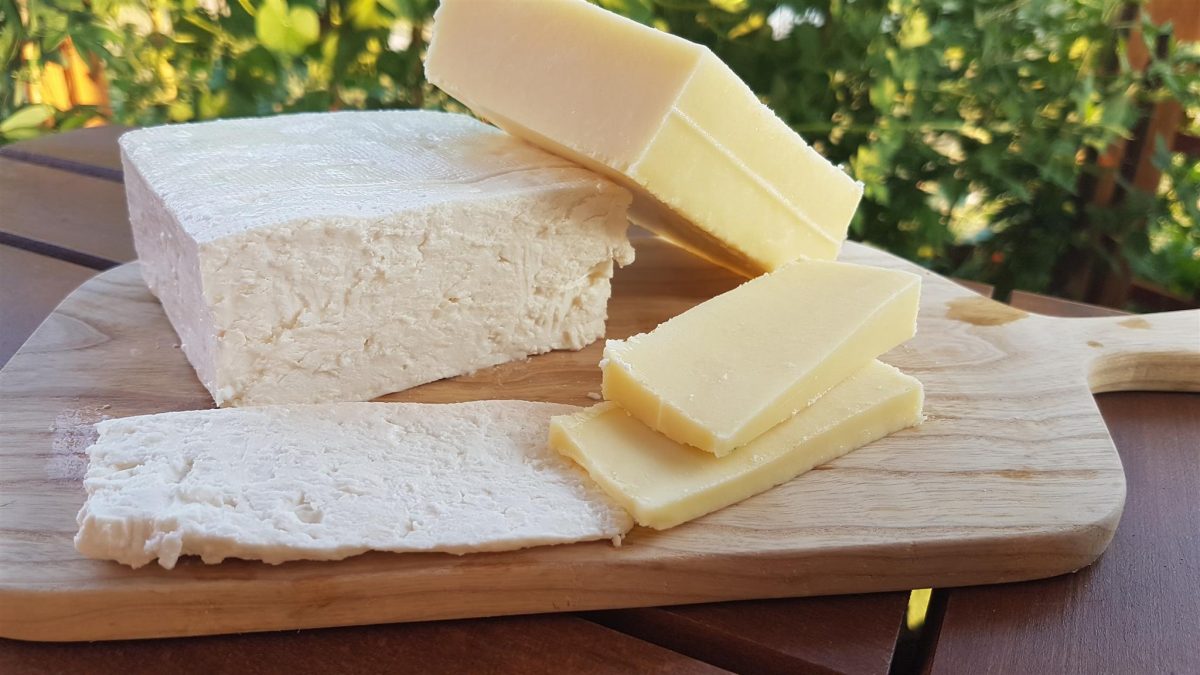
Photo by Rayne Hall (copyright)
The Bulgarian language has no word for ‘cheese’ – because Bulgarians view white and yellow cheese as two separate products.
Sirene (pronounced with three syllables, SEE-ray-nay) is a soft brined white cheese. It is a common ingredient in Bulgarian cuisine. Sweet and savoury dishes, hot and cold, contain sirene. It works great as a sandwich filler and salad topping. On the other hand, kashkaval is a yellow cheese, salty in flavour with a rubber-like texture. Bulgarians use it mostly as a cooking ingredient for savoury dishes.
Connoisseurs differentiate the cheeses by their region of origin, e.g. from the Stara Planina (Balkan) or Rhodope mountains. A more noticeable difference in flavour stems from the type of milk used. Both sirene and kashkaval can be made from cow’s, goat’s or sheep’s milk. If you can’t read the Cyrillic alphabet, look for small emblems of goat, cow or sheep heads on the labels.
Gourmet Tip:
We recommend the goats’ milk sirene, served with fresh locally-grown tomatoes, or with lyutenitsa relish. Since the rubbery texture and salty taste of the kashkaval on its own may not appeal to your palate, try it in a grilled ‘toster’ baguette.
10.
Lyutenitsa – Red Pepper Chutney
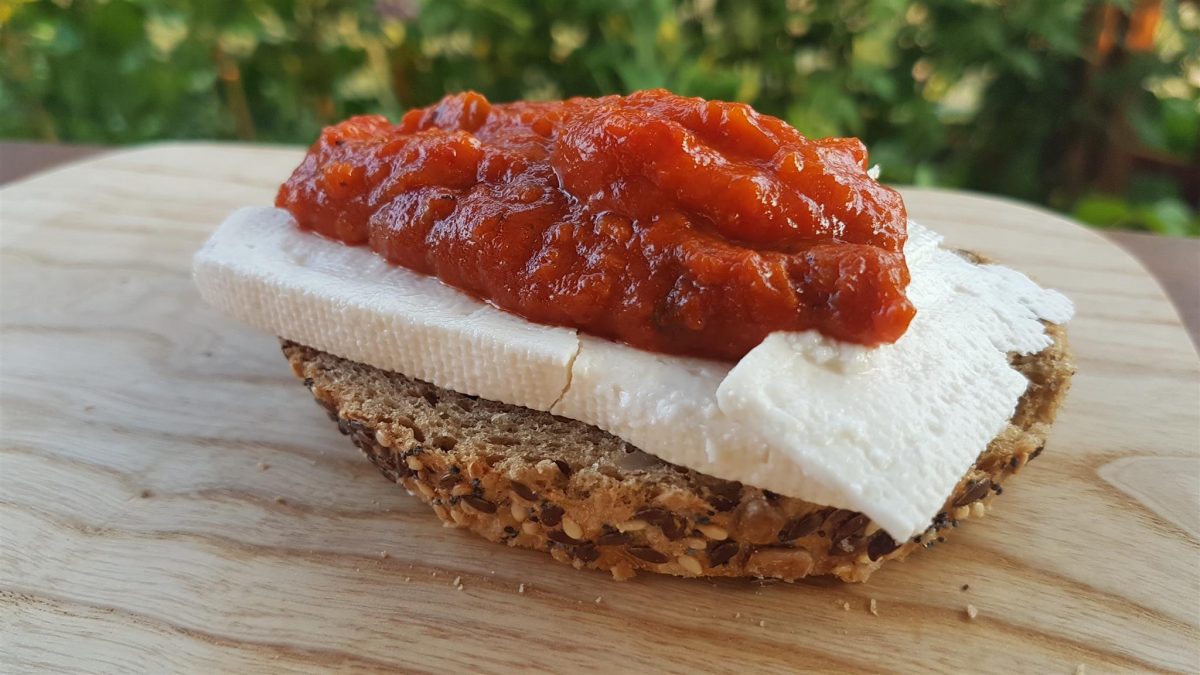
Photo by Rayne Hall (copyright)
Many Bulgarian homes traditionally prepared Lyutenitsa, a kind of chutney made from roasted red peppers. However, it takes a lot of work, so most Bulgarians buy commercially-produced lyutenitsa rather than making their own.
Roasted red peppers are the main ingredients, with tomatoes, sunflower oil, garlic, sugar and salt. Cooks may also add aubergine, potato, and carrot. Many Bulgarians are adamant that authentic lyutenitsa never contains onions, although not everyone agrees.
Visit any grocery shop in Bulgaria, and you’ll see lyutenitsa – often row after row of jars, with different brands, sizes and recipes, mild, spicy, chunky or smooth. These commercially produced variants are generally very good.
In a restaurant, you can order lyutenitsa as an extra when you eat a meat dish. It will be served in a small dish as a dip.
For a quick-to-prepare cold meal, top a slice of brown wholemeal bread with sliced sirene cheese and spread thickly with lyutenitsa.
Gourmet Tip:
The sweet-savoury flavour goes well with many hot and cold dishes, especially meat-based ones. Use lyutenitsa where you would use ketchup in western cuisines.
11.
Banitsa – Cheese-Filled Pastry

Photo by Rayne Hall (copyright)
A banitsa (also called ‘banitchka’) is a traditional Bulgarian pastry. It has layers of filo pastry with whisked eggs and sirene cheese. A banitsa may have other ingredients, such as walnut, pumpkin or spinach. The resulting pastries may be savoury or sweet, and are always delicious. You can eat them hot or cold. The typical shape is rectangular, and those rectangles can be huge – enough for a meal for one person, sometimes even for two.
Traditionally, banitsa is a breakfast food. Bulgarians may eat a banitsa with plain kiselo mlyako (yoghurt), a fresh tomato and black coffee for breakfast at home. You can also buy a banitsa as take-away food from a ‘sakuska’ booth. The Bulgarian word ‘sakuska’ can mean either ‘breakfast’ or ‘snack’. The banitsa you buy from the stalls are wrapped in grey paper, so your fingers won’t get greasy while eating.
If you find a banitsa too rich for breakfast, you can enjoy one for lunch. However, remember that most sakuska stalls close at 13.00 or 14.00. Another caution: If you’re trying to lose weight, stay away from these calorie-laden pastries. Rich in fat and carbohydrates, and addictive in their deliciousness, they can ruin any weight-loss diet. (Stick to shopska salata.)
Gourmet Tip:
If a Bulgarian baba (grandmother) offers you a home-made banitsa, rejoice and savour the experience. Home-made banitsa based on recipes handed down through the generations often taste like a slice of heaven. The best drink to go with a banitsa is black coffee.
12.
Tosteri – Grilled Filled Baguettes
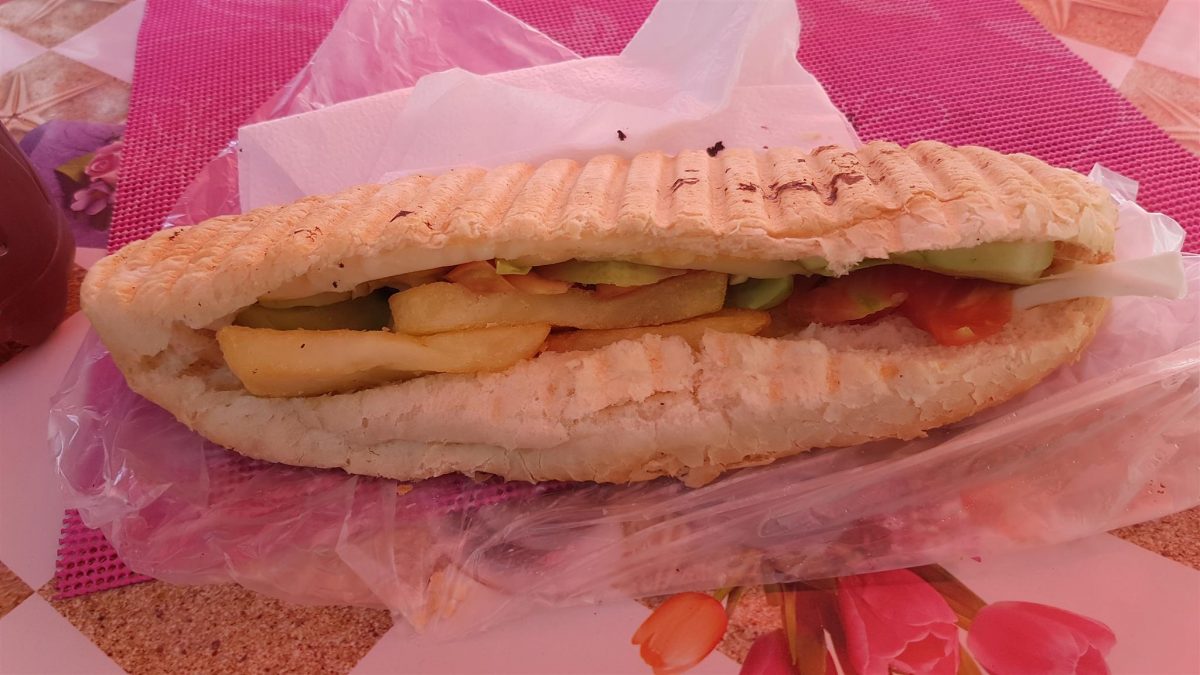
Photo by Rayne Hall (copyright)
A toster (plural ‘tosteri’) is a thickly filled, grilled baguette. You choose your main filling ingredient – e.g. ham, kebapche, sirene or kashkaval – and the cook will then add cucumber, lettuce and tomato, as well as chips (aka french fries, pommes frites). Altogether, a toster is a filling meal, and it’s surprisingly inexpensive.
You won’t find it in restaurants, but rather in roadside fast-food shops and sakuska stalls.
Gourmet Tip:
If you want an inexpensive yet tasty and nutritionally balanced fast-food meal, a toster is a good choice.
13.
Printsessa – Cheese On Toast
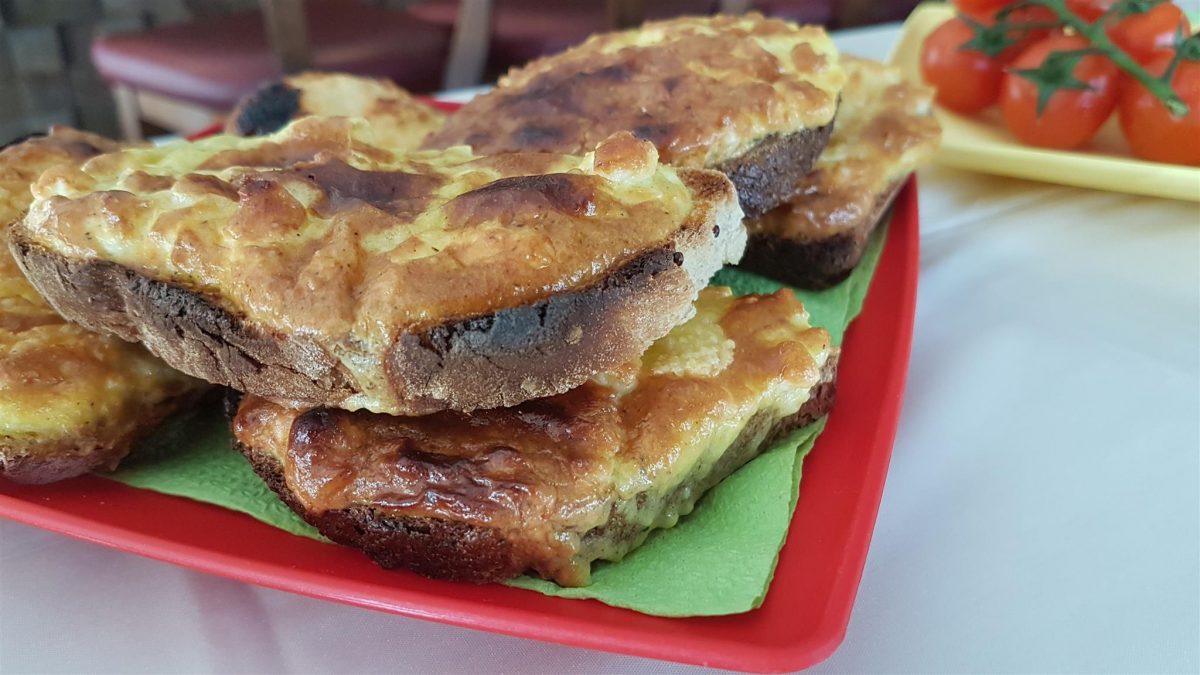
Photo by Rayne Hall (copyright)
‘Printsessa’ means ‘princess’ – but the name is puzzling. Apparently, the printsessa got its name during the communist period, when royal connections were disdained. So how did this simple worker’s breakfast get its name? Nobody knows for sure, although it may have been inspired by the an archaeological discovery, the grave of an ancient princess.
Basically, a printsessa is cheese on toast, but with interesting twists. Some recipes use sirene mixed with egg, others kashkaval and onion. Herbs like savoury are added. Variations feature bacon or ham.
In a Bulgarian home, the printsessi are prepared in a special grill, and the cooked slices are piled up on a plate. When you buy a printsessa from a sakuska stall, you’ll get a single slice, typically wrapped in grey paper.
Gourmet Tip:
Combine a printsessa with fresh tomatoes.
Final Thoughts
Bulgarian cuisine has so much to offer – all you need to do is explore it. Let us know which one of these Bulgarian food you want to try in the comments!

